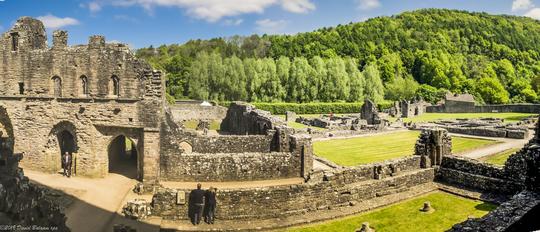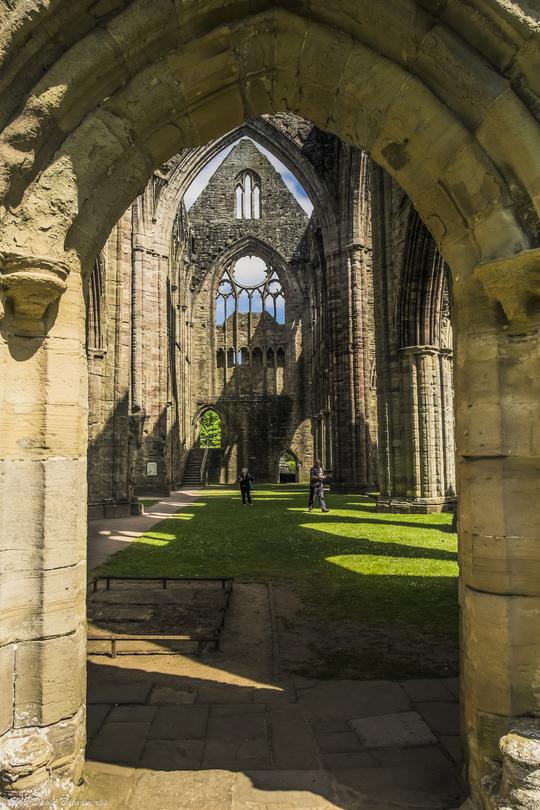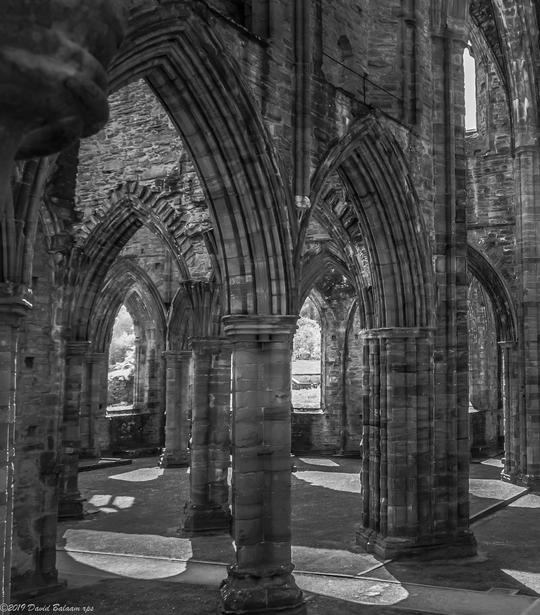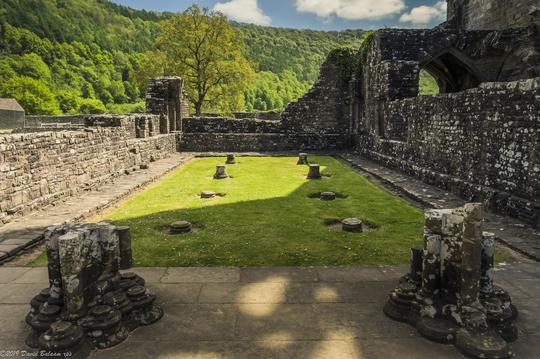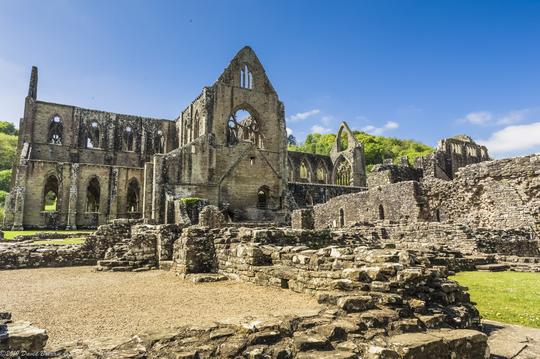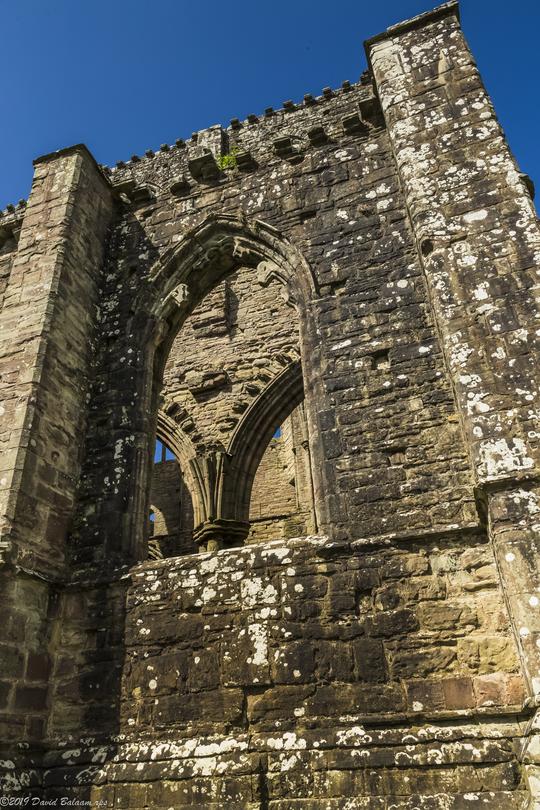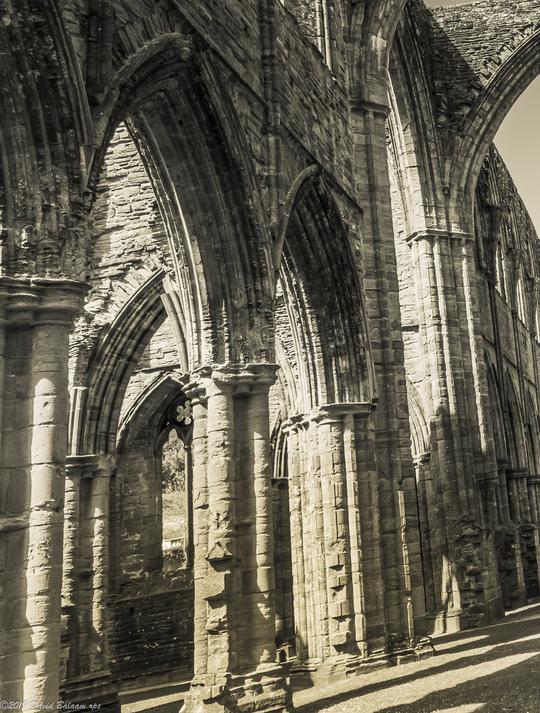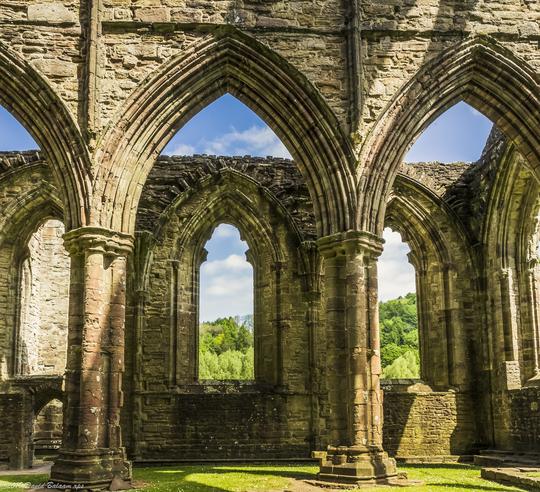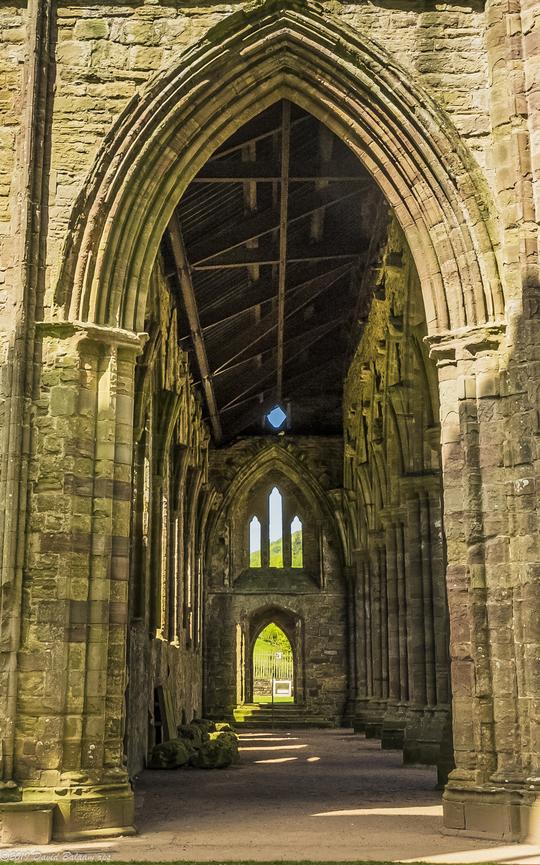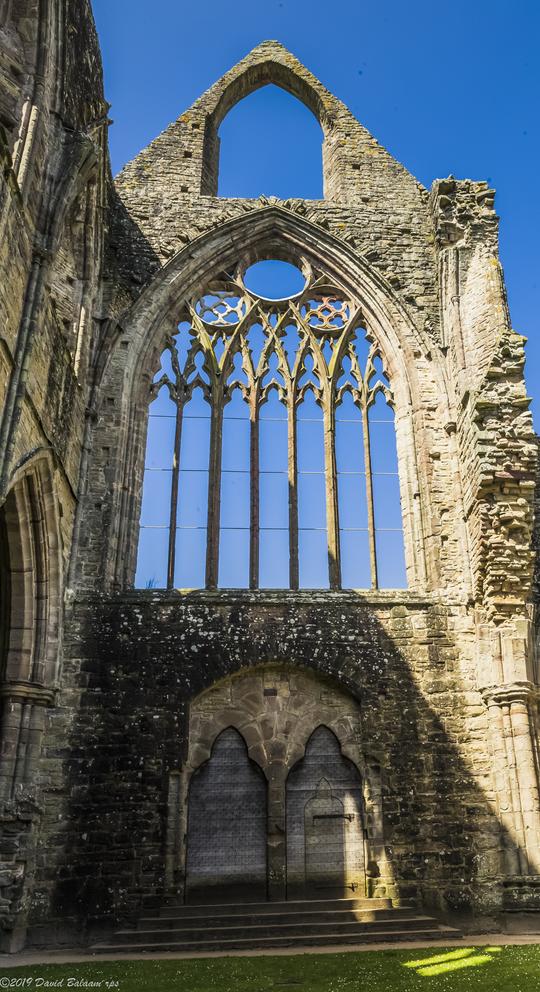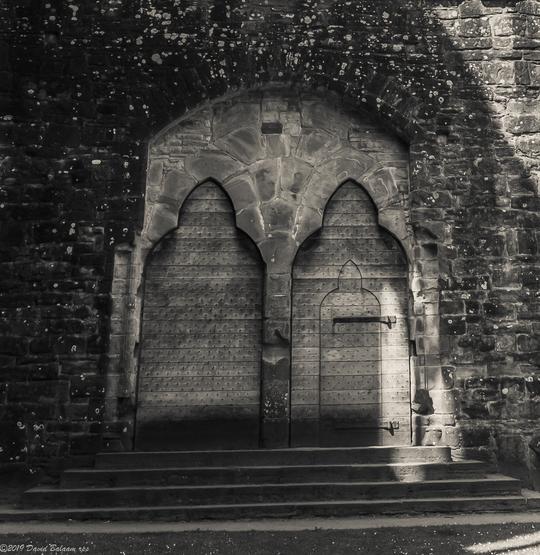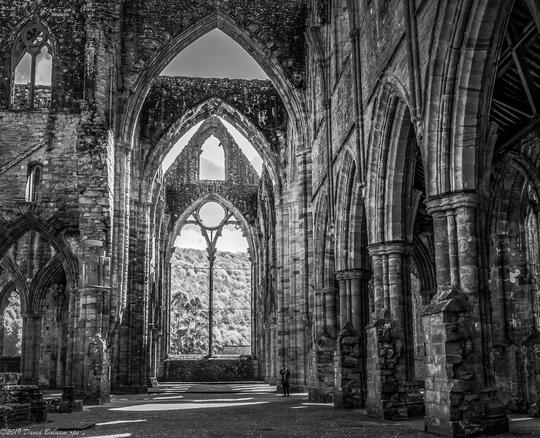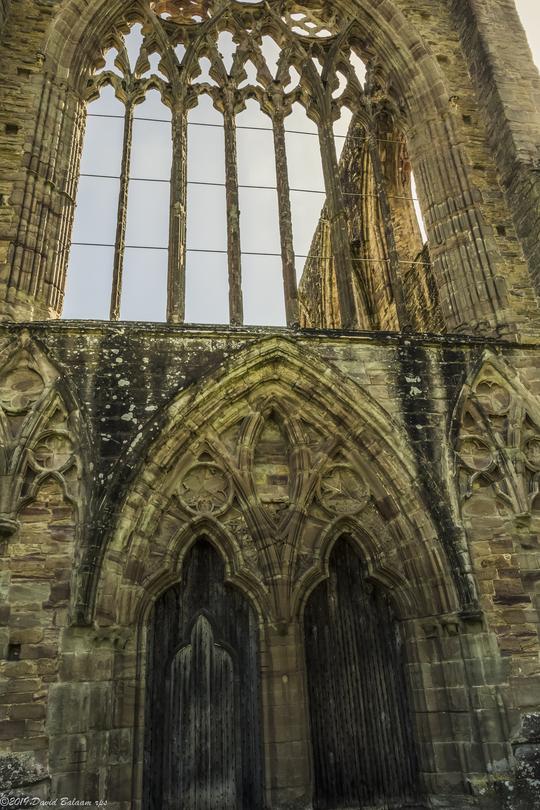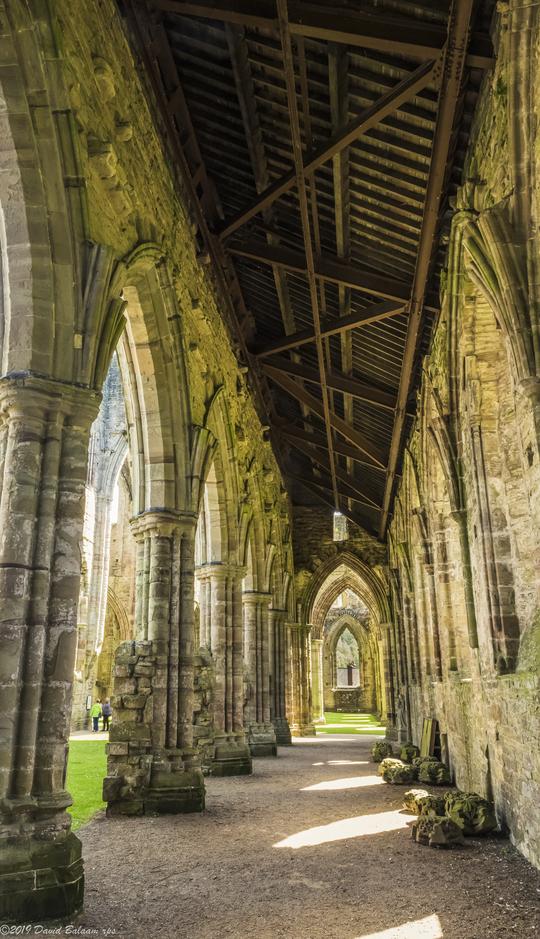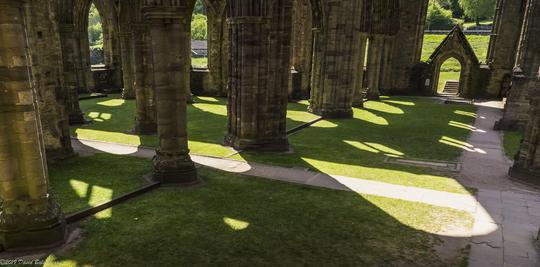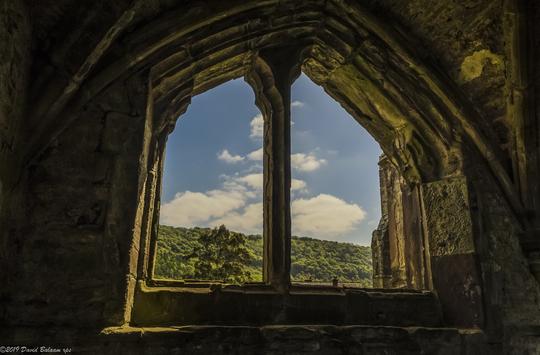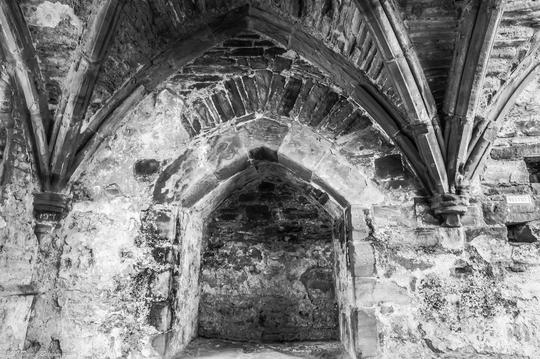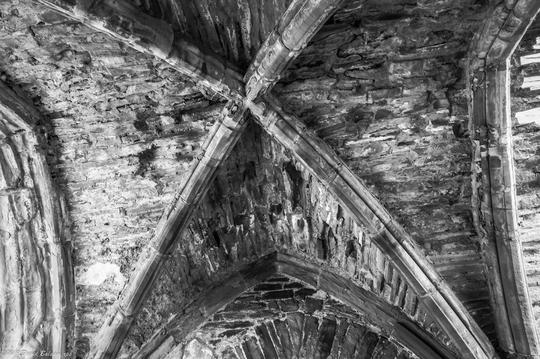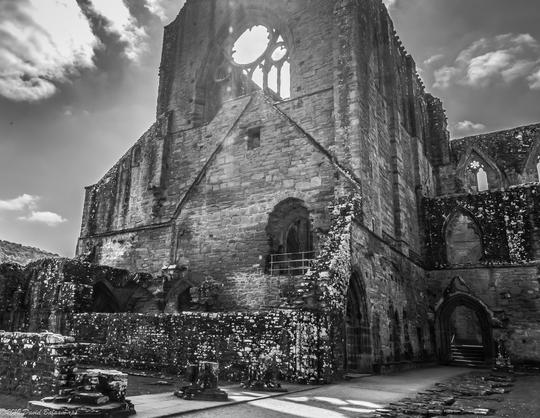Tintern Abbey
The present-day remains of Tintern are a mixture of building works covering a 400-year period between 1131 and 1536. Very little of the first buildings still survives today; a few sections of walling are incorporated into later buildings and the two recessed cupboards for books on the east of the cloisters are from this period. The church of that time was smaller than the present building, and slightly to the north. The Abbey was mostly rebuilt during the 13th century, starting with the cloisters and domestic ranges, and finally the great church between 1269 and 1301. The first mass in the rebuilt presbytery was recorded to have taken place in 1288, and the building was consecrated in 1301, although building work continued for several decades. Roger Bigod, 5th Earl of Norfolk, the then lord of Chepstow, was a generous benefactor; his monumental undertaking was the rebuilding of the church. The earl's coat of arms was included in the glasswork of the Abbey's east window in recognition of his contribution. It is this great Decorated Gothic abbey church that can be seen today, representing the architectural developments of its period; it has a cruciform plan with an aisled nave, two chapels in each transept, and a square-ended aisled chancel. The abbey is built of Old Red Sandstone, with colours varying from purple to buff and grey. Its total length from east to west is 228 feet, while the transept is 150 feet in length. King Edward II stayed at Tintern for two nights in 1326. When the Black Death swept the country in 1349, it became impossible to attract new recruits for the lay brotherhood; during this period, the granges were more likely to be tenanted out than worked by lay brothers, evidence of Tintern's labour shortage. In the early 15th century, Tintern was short of money, due in part to the effects of the Welsh uprising under Owain Glyndŵr against the English kings, when abbey properties were destroyed by the Welsh. The closest battle to Tintern Abbey was at Craig-y-dorth near Monmouth, between Trellech and Mitchel Troy. In the reign of King Henry VIII, the Dissolution of the Monasteries ended monastic life in England, Wales and Ireland. On 3 September 1536, Abbot Wych surrendered Tintern Abbey and all its estates to the King's visitors and ended a way of life that had lasted 400 years. Valuables from the Abbey were sent to the royal Treasury and Abbot Wych was pensioned off. The building was granted to the then lord of Chepstow, Henry Somerset, 2nd Earl of Worcester. Lead from the roof was sold and the decay of the buildings began.
